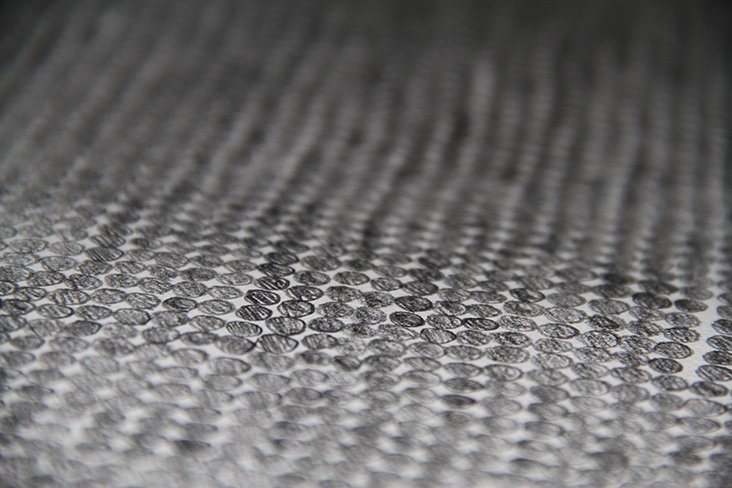What do Full Metal Jacket’s Private Joker and artist Fiona Banner have in common? In the midst of a war zone Private Joker’s thoughts drift back to “erect-nipple wet dreams of Mary Jane Rottencrotch and the Great Homecoming Fuck Fantasy”. Banner’s current exhibition at Birmingham’s Ikon Gallery treads the same ground: from THE NAM, a scene-by-scene description of well-known Vietnam War films (as well as Full Metal Jacket it includes The Deer Hunter and Apocalypse Now), presented in a 1,000 page book, to the more notorious and tabloid-friendly title, Arsewoman in Wonderland, a written transcription of a pornographic film. Like Guardian critic Adrian Searle, I can’t help wondering, “she must like all this stuff: words, engines of war, testosterone-laden war movies and porn flicks”.
In Channel 4’s short interview with Banner for the 2002 Turner Prize, she lists her favourite words as “ricochet, spunk, daffodil”. Of all the great words to choose from these three perhaps stand as a lexical Venn diagram, with Banner existing in the areas of overlap.
“I’m very conscious of the brilliance of language and its power – I mean it is I the blood to our thoughts – but also I find it very frustrating and I have a lot of fear about language and communication”. If etymology is the study of the history of words, Banner’s 2007 neon sentence, The Bastard Word, is a statement of intent. The art rather than the science of language. Words of questionable origin.
Language’s eternal struggle to describe experience is Banner’s “spunk”, where the discrepancy between real life and its description generates a rich, but often crude, vocabulary. Pornography cannot accurately describe a sexual encounter, and certainly not love. But for Banner that is the attraction. Indeed, when reflecting on her own intimate moments, Banner names fonts as the “things that I’ve spent many, many hours in a one on one relationship with”.
More familiar than most with the actuality of the pornographic film, “Britain’s Biggest Porn Star” Ben Dover suggests a more cynical interpretation of Banner’s Arsewoman in Wonderland text. “Porn attracts publicity, everybody knows that. The media furore that gathers around it, that is the work of art”. When pressed on the subject, Banner complains, ”That was one piece! And they’re still calling me ‘the porn artist’! I just think that sort of kneejerk, oo-er missus reaction is not helpful, really”.
Then what of “ricochet”? Although more phonaesthetically pleasing than “spunk”, Banner’s ricochet concerns an uglier context. What Head of Learning at Ikon, Simon Taylor, describes as “the contradictory relationship she has with the military and it’s hardware”. As much as Banner delights in bellicose emblems, such as the decommissioned fighter planes she displayed in Tate Britain for the 2010 Duveen commission, “on another level I’m horrified by them”.
Banner recalls walking in the Welsh mountains with her father when she was younger. “Suddenly a fighter plane would rip through the sky, and shatter everything. It was so exciting, loud and overwhelming; it would literally take our breath away… At the time Harrier jump jets were at the cutting edge of technology but to me they were like dinosaurs, prehistoric, from a time before words”.
For all Banner talks of military paraphernalia as the “opposite of language”, the associated vocabulary is as rich and often analogous to that of the porn world: “Arse to Grass”, “Begging Dog”, “Backwards Take Off”. All lines from Banner’s RAF Waddington wall text, which at Ikon accompany her 2013 video Chinook, in a kind of The Art of War meets Karma Sutra style concrete poem, used to describe the “extraordinary aerodynamic function” the helicopter is able to demonstrate.
Spunk and ricochet, porn films and military flying machines, both traditionally rooted in the masculine domain. Even the slightly crude Mirror, Banner’s descriptive word-portrait of Samantha Morton, which the actor would later read aloud – “her tits spill out from behind her massive hands”. Had a male artist written this, the reading would have undoubtedly been different, if no less awkward. So does Banner consider herself a feminist? “No. It’s not that I’m radically unfeminist or anything – it’s because I think feminism belonged to a particular point and time. And I can’t afford to be part of any ‘ism’ as an artist”.
This freshness may not be for everybody. Kim Howells, then minister for culture famously described Banner’s 2002’s Turner Prize work as “conceptual bullshit”. Likewise the Observer’s Laura Cumming was equally dismissive of Banner, “nobody with any love of the visual could spend more than second in this trap”, perhaps falling into it herself. Banner’s work is not about obvious beauty. It’s about the failure of language to articulate it. Yet in the filth, in ‘Nam in the fog of war, or under the shadow of a phallic military machine, that is where Banner’s “daffodil” emerges, in the small observances that language adds to sensory experience.
Banner describes the eccentric compulsive hoarder Edmund Trebus as an inspiration. “The council kept coming over and emptying out his garden, which was full of trash and rats, and they’d come the next year and it would be full up again. There was something very beautiful about the way he was living”. Private Joker recounts, for Banner as much for himself, “I’m in a world of shit… yes. But I am alive. And I am not afraid”.
___
Originally published as part of the inaugural a-n Writer Development Programme, edited and following a workshop led by Fisun Guner, visual arts editor, The Arts Desk, and a-n News Editor Chris Sharratt.
